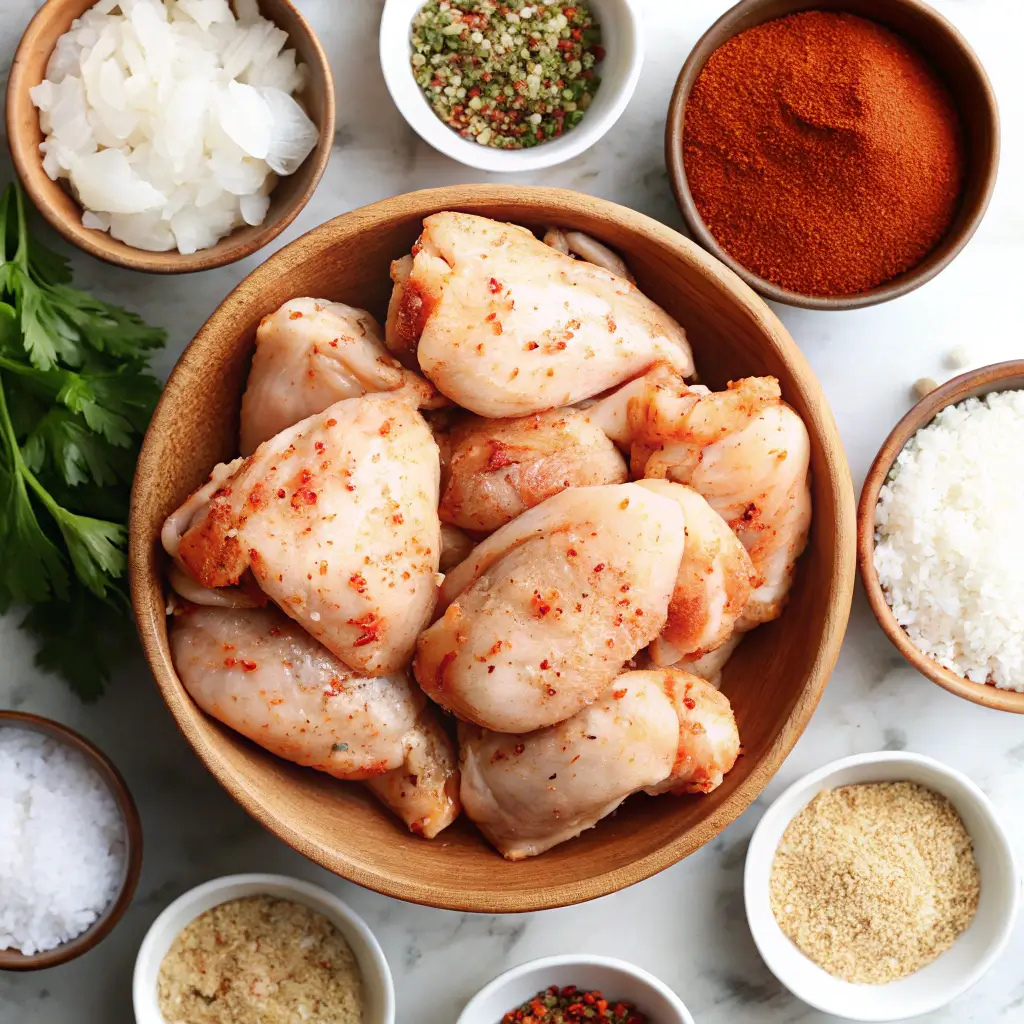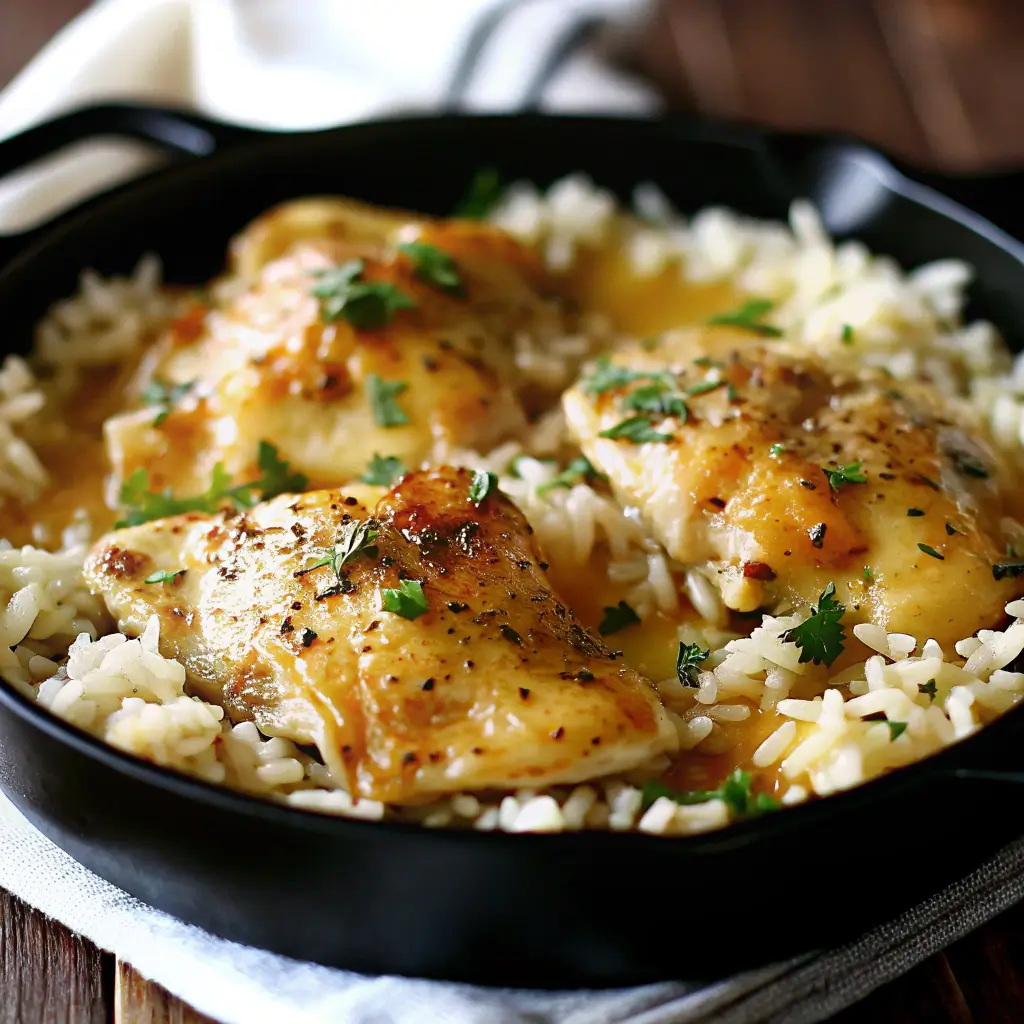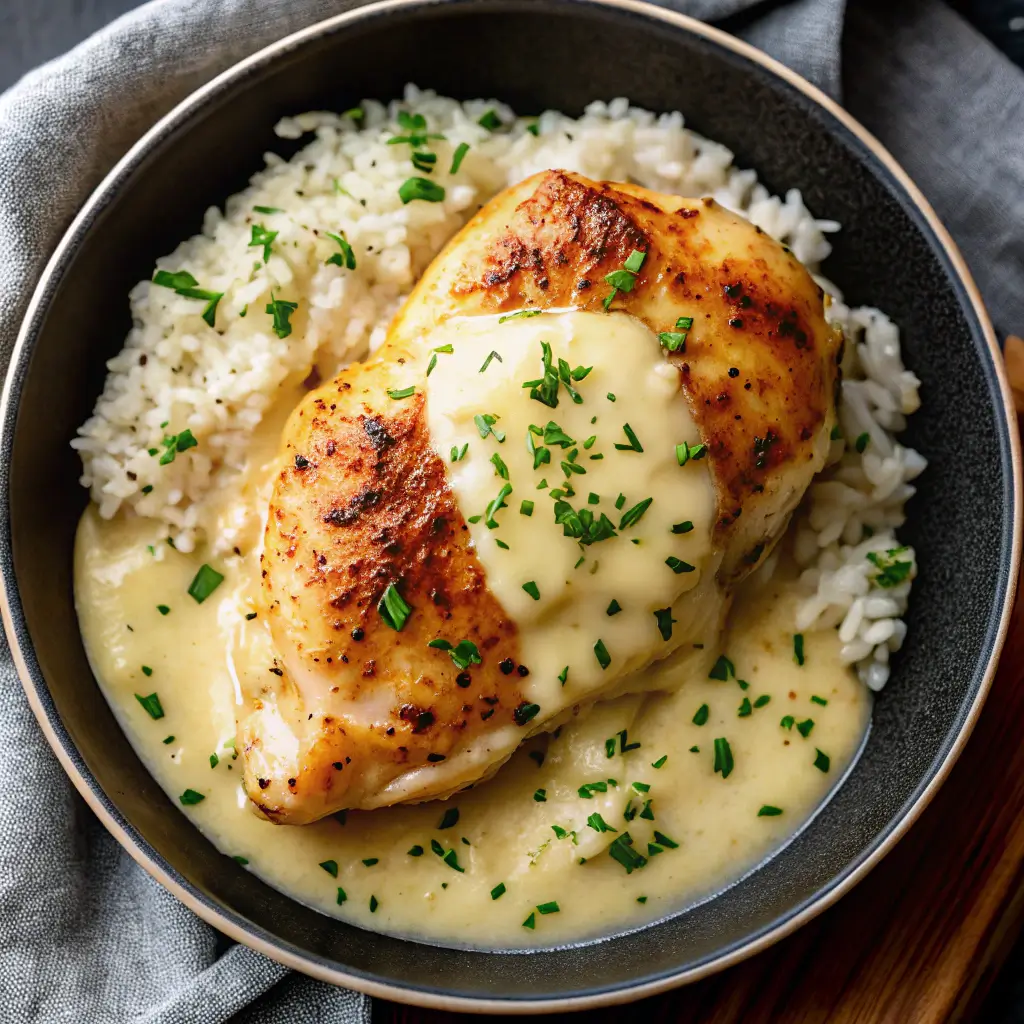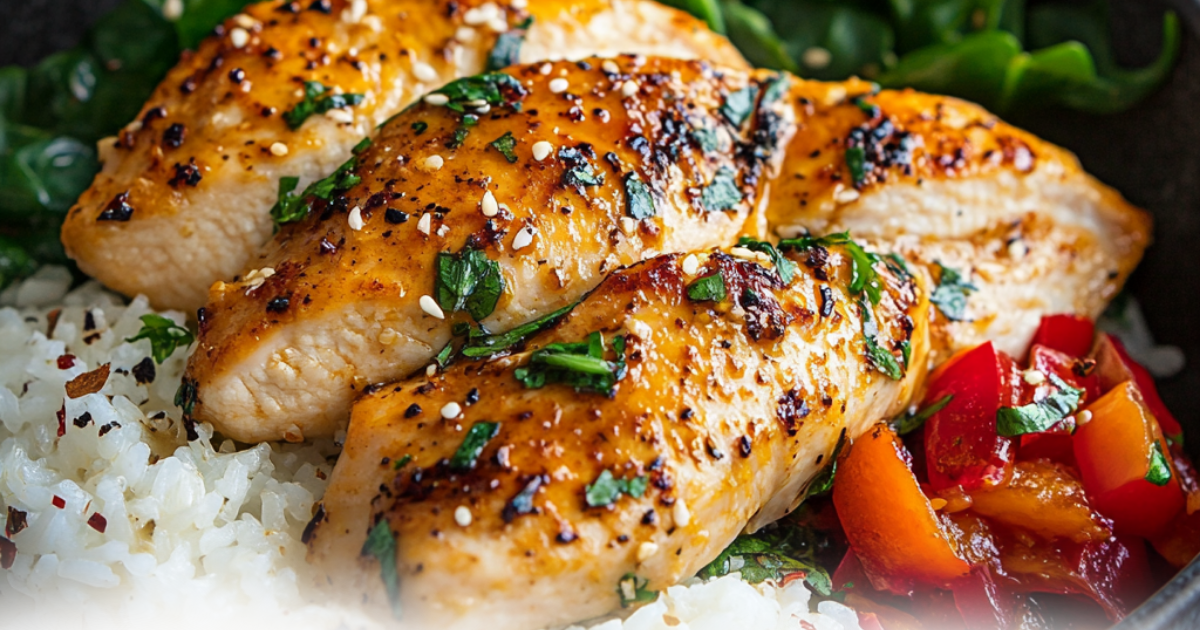Combining chicken breast and rice is a common culinary practice worldwide. Whether you’re aiming for a healthy, balanced diet or simply trying to prepare a quick meal, this combination has a lot to offer. In this guide, we’ll uncover the nutritional value of chicken breast and rice, explore their health benefits, and answer burning questions like “Can I eat chicken breast with rice?”. You’ll also discover delicious recipes, potential risks, and tips to make the most out of this classic pairing.
Table of contents
Nutritional Value of Chicken Breast and Rice
Key Nutrients in Chicken Breast
Chicken breast is often hailed as a nutritional powerhouse. Packed with lean protein, it’s an excellent source of essential amino acids necessary for muscle repair and overall body function. A standard 100-gram serving provides around 31 grams of protein and is incredibly low in fat, making it a popular choice for those pursuing a healthier lifestyle. Beyond protein, chicken breast is rich in vitamins B6 and B12, which support energy metabolism and brain health.
It also contains essential minerals like phosphorus and selenium. These contribute to strong bones and bolster the immune system, respectively. What’s more, chicken breast’s low-calorie content makes it perfect for meals designed to keep you full without overloading on calories.
Nutritional Profile of Rice
Rice is a global staple, and for good reason. It’s a readily digestible carbohydrate source that provides the body with quick energy. White rice, in particular, is a great option for replenishing glycogen levels after workouts. For a more nutrient-dense alternative, brown rice offers more fiber and micronutrients like magnesium, which aids in muscle relaxation and heart health.
A standard cup of cooked rice provides roughly 200 calories, along with small amounts of iron and vitamin B3. This makes it an ideal partner to chicken breast in creating a balanced, filling meal.
Benefits of Combining Chicken Breast and Rice
When paired together, chicken breast and rice form a balanced meal with complementary nutrients. The lean protein in chicken satisfies hunger and promotes muscle growth, while the carbs in rice provide the energy needed for daily activities or exercise. This dynamic duo ensures a steady energy supply without leading to blood sugar spikes, making it suitable for individuals with varied dietary needs.

By combining these two foods, you create a meal that’s not only nourishing but also adaptable to countless flavor profiles, ensuring that every bite is as enjoyable as it is beneficial.
Health Benefits of Eating Chicken Breast with Rice
Weight Management and Satiety
One of the biggest reasons people ask, “Can I eat chicken breast with rice?”, is for its potential to support weight management. The combination of high-protein chicken breast and energy-packed rice helps keep you full longer, reducing the urge to snack on unhealthy foods. Protein boosts satiety because it takes longer to digest, while rice provides the necessary carbohydrates for sustained energy without causing a calorie overload.

Moreover, brown rice, which is higher in fiber, helps improve digestion and stabilize blood sugar levels. This balance is crucial for maintaining a healthy weight and avoiding energy crashes throughout the day.
Muscle Building and Recovery
If you’re focused on building muscle or recovering after workouts, chicken breast and rice make an ideal pairing. Chicken breast delivers lean protein—essential for repairing muscle tissue damaged during exercise—while rice replenishes glycogen stores, the body’s primary energy source. This powerful combination supports both endurance and strength training programs, making it a go-to meal for athletes and fitness enthusiasts.
Additionally, the amino acids in chicken promote protein synthesis, ensuring muscles recover faster and grow stronger. When combined with the carbohydrates in rice, you get a meal that fuels both performance and recovery.
Digestive Health and Energy Levels
Rice, particularly white rice, is gentle on the stomach and easy to digest, making it a suitable carb source for those with sensitive stomachs. On the other hand, chicken breast’s low-fat content minimizes digestive strain. Together, they form a meal that’s not only nutrient-rich but also easy to process, which is especially beneficial for those recovering from illness or dealing with digestive issues.
The steady release of energy from rice keeps you feeling active throughout the day. This makes chicken breast and rice an excellent choice for lunch or dinner, ensuring you stay productive without feeling sluggish.
Can Chicken Breast with Rice Support Weight Loss?
Calorie Deficit and Portion Control
A common question, “Can I eat chicken breast with rice?”, often relates to weight loss goals. The answer depends on how you manage portion sizes and overall calorie intake. Chicken breast is naturally low in calories and high in protein, helping you feel full while consuming fewer calories. Rice, although higher in calories, provides the necessary energy to stay active, especially when eaten in moderate portions.

For optimal weight loss, pair your chicken and rice meal with steamed vegetables or a side salad. These add fiber and volume without significantly increasing calorie content. Stick to measured portions, such as 100 grams of chicken and ½ cup of rice, to create a balanced, calorie-conscious meal.
Practical Tips for Incorporating into a Diet
To include chicken breast and rice in your weight loss journey, consider meal prepping. Cook batches of chicken and rice in advance, then divide them into appropriately portioned containers for easy, healthy meals throughout the week. Adding flavorful herbs and spices can keep your meals interesting while avoiding high-calorie sauces or dressings.
Another tip is to choose brown rice instead of white, as its higher fiber content promotes satiety and regulates digestion. Including vegetables like broccoli or spinach not only enhances the nutrient profile but also makes the meal visually appealing and satisfying.
Potential Risks of Eating Chicken Breast with Rice Exclusively
Nutrient Deficiencies
A meal of chicken breast and rice is undoubtedly nutritious, but eating it exclusively can lead to potential gaps in your diet. While chicken provides lean protein and essential amino acids, and rice offers energy-rich carbs, this pairing lacks a few critical nutrients. For instance, it doesn’t supply enough dietary fiber unless you opt for brown rice, and it’s also low in healthy fats, calcium, and vitamins like A, C, and K.
Over time, this could result in deficiencies, impacting bone health, immune function, and overall vitality. To maintain a balanced diet, it’s essential to include a variety of fruits, vegetables, and healthy fats alongside your chicken and rice.
Risks of Long-Term Monotony in Diet
Another challenge of eating chicken breast and rice exclusively is the monotony it creates. A lack of variety not only impacts nutritional intake but can also reduce your enjoyment of meals. Over time, this can lead to “diet fatigue,” causing cravings for less healthy options and making it harder to stick to your goals.
Supplementing with Other Foods
To mitigate these risks, add nutrient-dense options like steamed broccoli, carrots, or spinach to your plate. Healthy fats like avocado slices or a drizzle of olive oil can round out the meal. If you’re looking for inspiration, check out this recipe for Smothered Chicken and Rice Recipe
Recipe Ideas for Chicken Breast with Rice
Simple Recipes for Everyday Meals
When you’re wondering, “Can I eat chicken breast with rice?”, the answer isn’t just yes—it can also be delicious! Start with a basic grilled chicken breast served over steamed white or brown rice. Add a pinch of salt, pepper, and a squeeze of lemon for a quick, flavorful meal that’s perfect for busy days.
For a one-pot option, cook diced chicken breast with rice, chicken broth, garlic, and your favorite vegetables. It’s easy, hearty, and packed with nutrients.
Enhancing Flavor with Healthy Add-Ons
For a more adventurous meal, incorporate spices like turmeric, cumin, or paprika into your rice for added depth. Pair the chicken with a low-sodium soy sauce or a homemade yogurt dressing to elevate its flavor. You can also mix in sautéed mushrooms, peas, or roasted red peppers to create a vibrant, nutrient-rich dish.
Creative Takes on Chicken and Rice
If you’re craving international flavors, try creating a stir-fry by combining chicken, rice, soy sauce, ginger, and colorful veggies like bell peppers and snow peas. For something heartier, consider a chicken and rice casserole topped with a light sprinkle of cheese and baked to perfection.
Looking for more creative recipes? Check out ZenaRecipes’ Lemon Pepper Grilled Chicken for another variation that pairs beautifully with rice: Lemon Pepper Grilled Chicken.
FAQs About Chicken Breast and Rice
Is Chicken Breast with Rice Healthy for Everyday Meals?
If you’re wondering, “Can I eat chicken breast with rice every day?”, the answer is yes, but with a few caveats. This pairing is healthy and nutritious, offering a balance of lean protein and carbohydrates to fuel your body. However, eating it daily without adding variety can result in nutrient gaps. To make it more balanced, include vegetables, fruits, or legumes for fiber and essential vitamins.
Can Chicken Breast with Rice Help Build Muscle?
Absolutely! This combination is a favorite among fitness enthusiasts. The high protein content in chicken breast aids in muscle repair and growth, while rice replenishes glycogen stores needed for sustained energy. Adding a drizzle of olive oil or a handful of nuts can also provide healthy fats to support muscle recovery.
Are There Alternatives to Chicken Breast for a Similar Meal?
Yes, there are plenty of substitutes if you’re looking to mix things up. Lean turkey breast or plant-based options like tofu and chickpeas work well with rice. They offer similar nutrients while adding variety to your diet. For those who love seafood, grilled fish like salmon or shrimp also pairs wonderfully with rice.
Expert Tips for a Balanced Diet
Including a Variety of Food Groups
While chicken breast and rice make a great foundation, a balanced diet requires more. Pair your meal with colorful veggies like spinach, carrots, or bell peppers to boost your intake of vitamins, fiber, and antioxidants. You can also include fruits for a touch of natural sweetness and a dose of essential nutrients.
Avoiding Overdependence on Single Meals
If you’re asking, “Can I eat chicken breast with rice?”, keep in mind that variety is key to long-term health. Eating the same meal repeatedly can lead to fatigue and limit your nutrient intake. Rotate chicken and rice with other healthy options like quinoa, sweet potatoes, or whole wheat pasta to keep your meals exciting and well-rounded.
Importance of Listening to Your Body
Lastly, always listen to your body. Adjust your meals based on how you feel after eating. If you’re lacking energy, add more complex carbs like brown rice or healthy fats like avocado. By staying mindful of your needs, you can create meals that support your overall well-being while still enjoying this classic combination.

